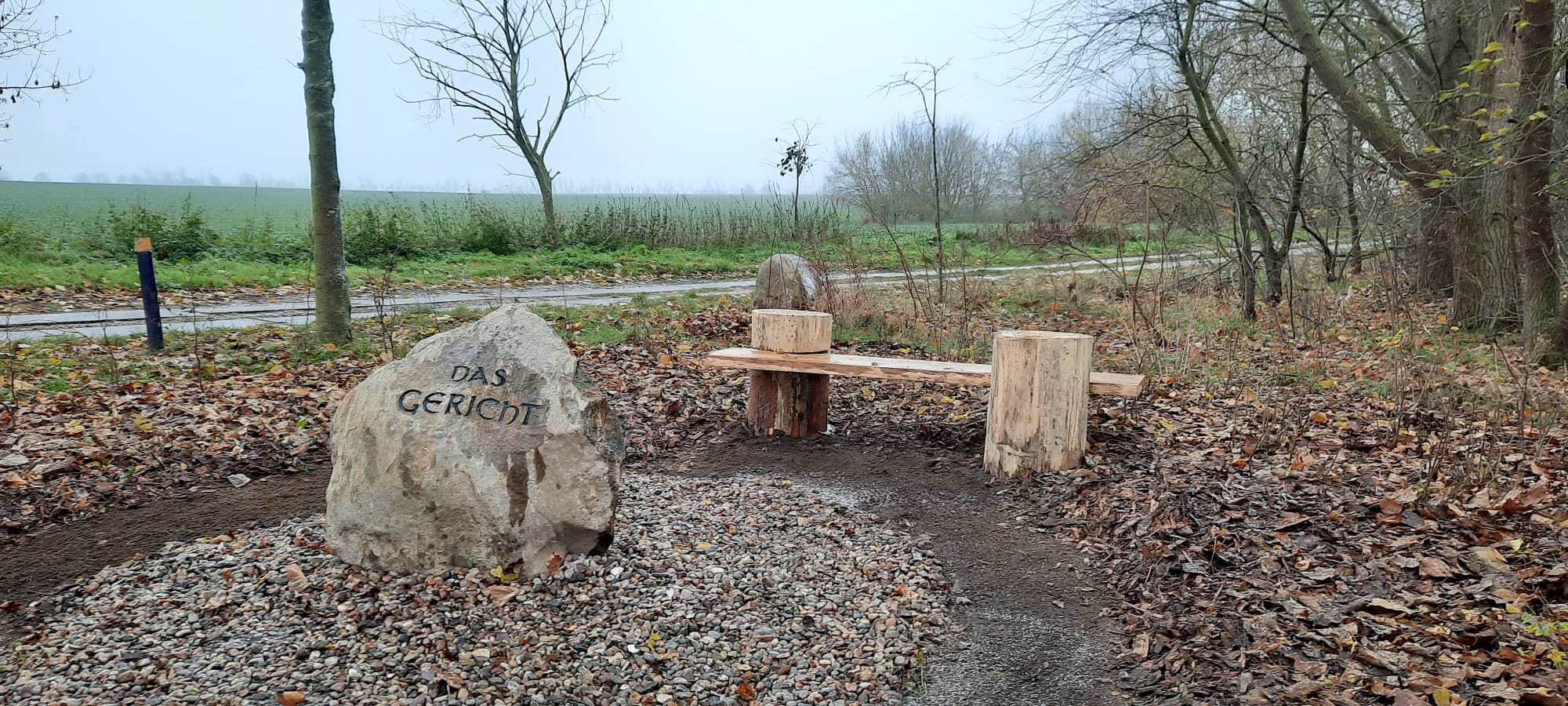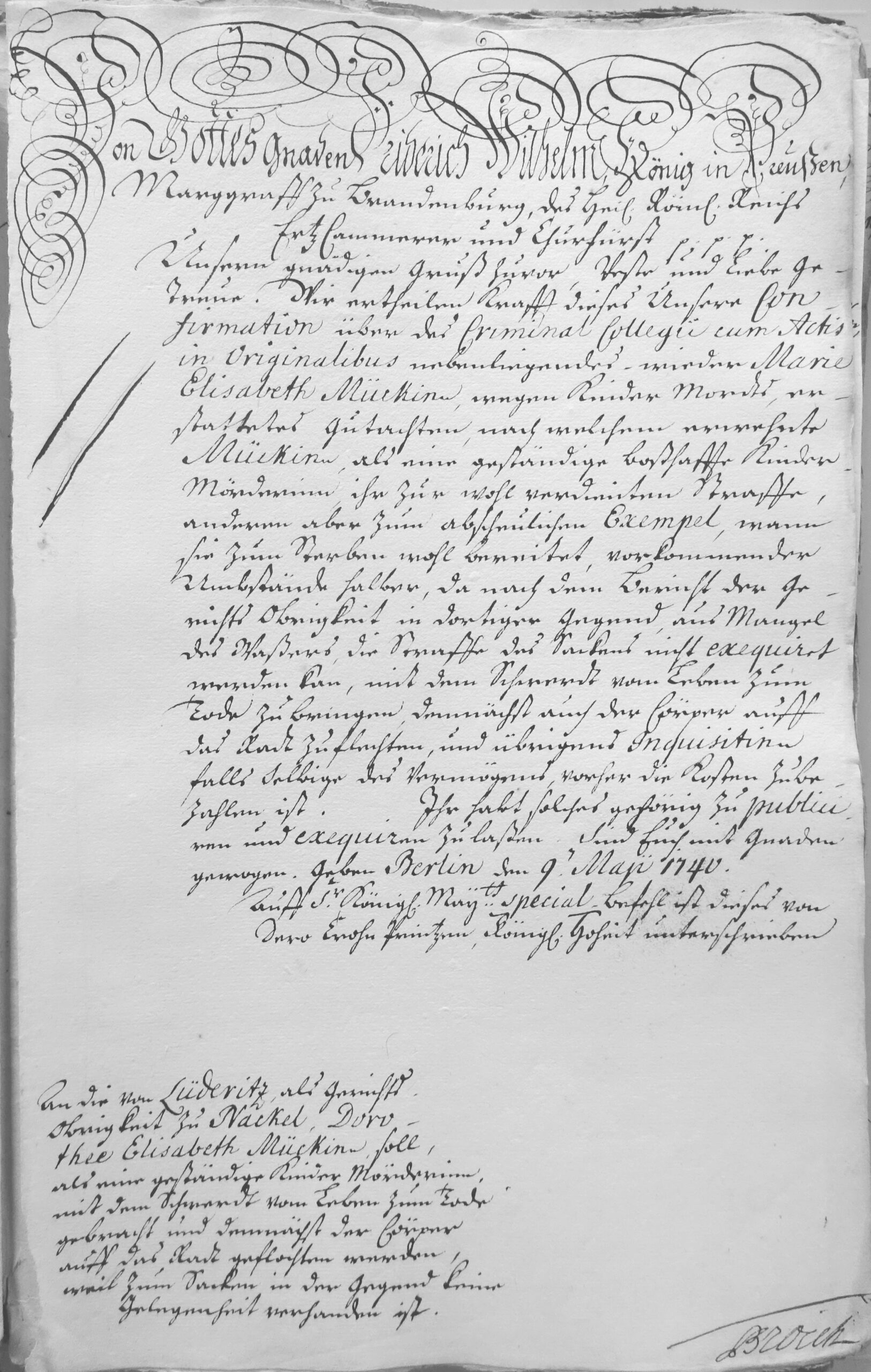The "court" Nackel
In Nackel there has always been a tradition that a child murderer was executed at the crossroads to Rohrlack. The place called the "court" is now on the Berlin-Wilsnack pilgrimage route.
This is one of the legends:
Once upon a time, a woman named Vürig is said to have strangled her newborn and thrown it to the pigs. As punishment, they were allowed to be torn apart by two yoke oxen at the "court".
The “court” is located at the Barsikow-Garz-Rohrlack-Nackel crossroads. The legend of the Vürig is probably not true, but Dorotheé Elisabeth Mücke, a maid from Nackel, was beheaded on June 28, 1740 for child murder by the Wusterhausen executioner in Nackel and then braided onto the wheel at the "court" to act as a deterrent. She had strangled her child after birth, as we know from the death sentence. At that time, infanticide was the most common reason for death sentences for women. Often these were maids who served far from their families and found no help anywhere.
Another misfortune happened: On August 27, 1740 Magret Sophie Wagner hanged herself. At that time, suicides were buried outside a cemetery or on places of execution. It is said that the executioner in the "sack on a sleigh drove out to the place of justice and buried it there".

Today a place to reflect and reflect - the court at Nackel

Copy of the death sentence
facts
Not only the tradition of the place has been preserved, the Nackeler got the place over the centuries. The current owner also actively supported the archaeological excavation and the redesign of the site, which was carried out by committed residents in 2022.
Sources
Ralf Dietrich MA: History and stories about the Nackel "court", basis of the contribution in the OPR 2022 yearbook
Discussion:
In 1740, infanticides were still sentenced to "sacking" according to the "Carolina" published in 1532, Charles V's order on the neck of the court - they were put in a sack with animals and drowned. A pardon for - less shameful and probably less painful - beheading with the sword was quite common. The reason given was the lack of a suitable body of water - this was also the case with Dorotheé Elisabeth Mücke. However, after the beheading, her body was braided onto the wheel and displayed at the crossroads.
The tradition that the child murderer Vürig was torn apart by 2 yoke oxen (ie four oxen that ran in pairs under the yoke) could belong to the realm of legends. High traitors and above all men were sentenced to be quartered; this punishment was unusual for women - if only for reasons of "decency".
The only connection to oxen or oxhide in relation to an execution that could have taken place is an aggravating and additionally abusive measure: the delinquent was wrapped in an oxhide and brutally dragged to the place of execution. Of course, we can no longer determine whether the tradition of such a process led to the story of the two yoke oxen, since we lack all the documents.
